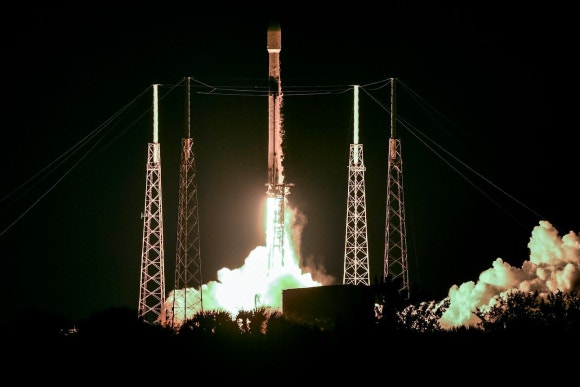아이폰 위성 서비스, 스마트폰 우주 경쟁 시작
Apple’s iPhone Satellite Service Kicks Off Smartphone Space Race
Years of preparation helped tech giant, but other phone makers, wireless carriers and aerospace companies have similar ambitions

Inc.’s AAPL 1.88%▲ new emergency-text feature on its latest iPhones makes it a first-mover in a budding market for low-cost satellite phone connections.
The Cupertino, Calif., tech giant last week said its new iPhone 14s will be able to from places off the cellular grid as soon as November. The service will cover the U.S. and Canada but could expand to more countries.
Apple is among companies, including Google owner Inc. GOOG 2.16%▲ and Chinese electronics manufacturer Huawei Technologies Inc., that are racing to integrate new technology so that ordinary smartphone users can stay connected in remote areas.
More complex communications, like voice calls between satellites and typical smartphones, are likely years away from reaching mass-market devices, industry analysts say. But the investments reflect a hot sector for tech companies looking to make their products and services stand out for customers.
Satellite-industry executives say Apple was able to clinch an early foothold by approaching satellite companies as early as 2019. The iPhone maker eventually struck an exclusive deal with Inc. for 85% of the satellite company’s network capacity. That decision blocked rival hardware makers from using Globalstar’s infrastructure to launch competing services.
“They’ve sort of locked this up, and it’s really down to Apple to decide how far they want to take it,” said Tim Farrar, president of telecom-industry consulting firm TMF Associates, noting that only one or two other companies have the right combination of already-launched satellites and access to wireless airwaves to effectively reach smartphones.
Fleets of satellites in orbits near Earth can provide mobile-phone users with basic service options when they are out of reach of cell towers, companies and executives say. The expensive satellite links are unlikely to replace the data-rich internet connections offered by cellular networks on the ground, but with enough improvement, they could help fill in gaps.
It isn’t clear how much consumers ultimately will pay for these services. Apple said last week that its new feature, called Emergency SOS via satellite, would be free for two years.
Huawei last week said its new Mate 50 smartphones will be able to send short messages in emergencies over the BeiDou Navigation Satellite System, the Chinese government’s version of the U.S. Global Positioning System.
Earlier this month, a Google executive said on Twitter that the company was designing its next version of Android to support communications with satellites. “Wild to think about user experiences for phones that can connect to satellites,” Hiroshi Lockheimer, a senior vice president at Google, said in a tweet. A spokesman for Google declined to comment.
Satellite operator Inc. said in July that it had an agreement to develop its technology for use in smartphones. The deal included provisions to recoup earlier costs incurred “for commercializing a similar capability with another party,” according to a securities filing. Iridium declined to name the partner in its filing, and a spokesman declined to comment on the company’s plans.
“There’s over a billion new smartphones a year. There’s something like seven billion smartphones out there in the coming years,” Iridium Chief Executive Matt Desch told investors in July. “I think it’s going to be a sizable market to make any kind of connection to devices like smartphones, and I wouldn’t even limit it to smartphones.”
Other satellite companies are chasing deals with mobile-phone network operators. ’s SpaceX agreed to develop mobile satellite links for T-Mobile US Inc., an arrangement the companies announced last month.
SpaceX would use Starlink satellites that it expects to launch to let T-Mobile users send and receive texts and use messaging apps in remote locations, executives have said. The companies plan to begin with a test of the service next year, though both need to secure approvals from the Federal Communications Commission to move ahead.
Mr. Musk said on Twitter that his company has also talked to Apple about SpaceX’s Starlink satellite-broadband business. He didn’t detail the nature or depth of the discussions. An Apple representative declined to comment.
A spokesman for Space Exploration Technologies Corp., the formal name for SpaceX, didn’t respond to a request for comment.
Charles Miller, CEO of Lynk Global Inc., a company that says it has demonstrated it can connect mobile phones to a satellite to allow for text messaging, said satellite capacity constraints make it challenging right now to provide high speeds to large numbers of users at the same time.
That should change over time as operators are able to deploy larger, improved satellites, he added. “That is the key thing to design for: capacity constraints,” Mr. Miller said.
Inc., another company working on satellite-to-mobile phone links, hired SpaceX to get a satellite to orbit so it could test connections to cellphones with network operators like Vodafone PLC.
“There’s been satphone technology for a long time,” said Scott Wisniewski, AST’s chief strategy officer. “The change is really technology improving so you can offer a service at a more attractive price.”
Meanwhile, big telecom providers have struck other types of deals with satellite operators or companies planning to roll out a network in orbit.
Last year, Inc. said it would use satellites operated by communications company OneWeb to provide links to remote cellphone towers. Verizon Communications Inc. agreed to a similar deal with Amazon.com Inc., which plans to start deploying its own satellite-internet constellation.